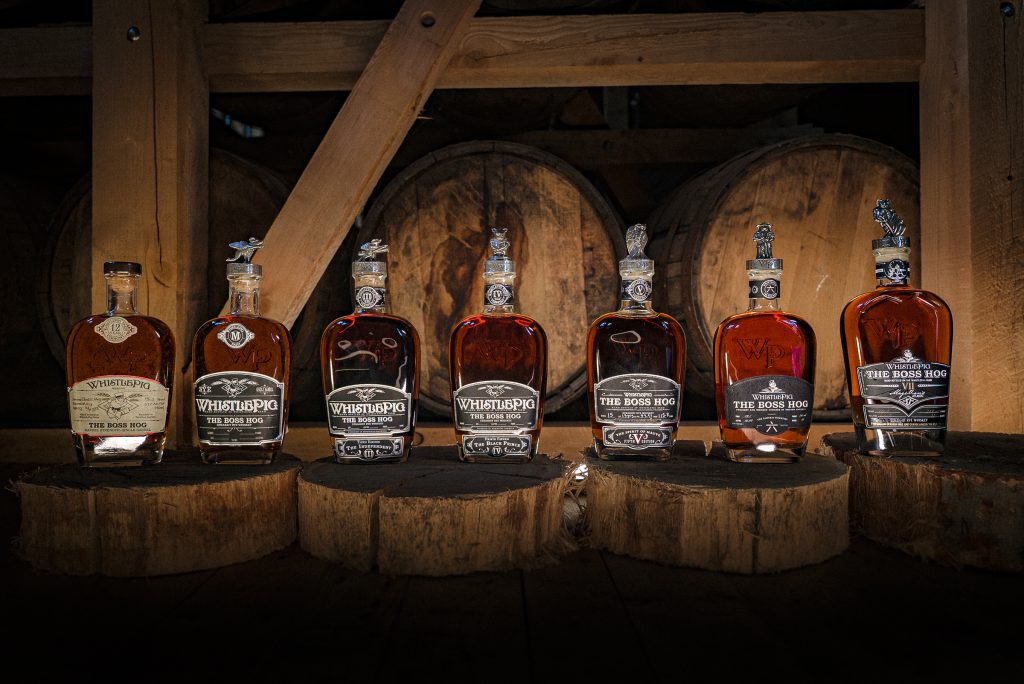Touring WhistlePig’s Vermont Distillery
Tasting The Boss Hog VIII: LapuLapu’s Pacific and other expressions with whiskey blender Meghan Ireland and lead distiller Emily Harrison

One coveted spirits brand has remained a constant (and consistently evolving) fixture in the reemergence of the rye whiskey category: WhistlePig. The brand coalesced around the purchase of an idyllic Shoreham, Vermont farm in 2007 and tapped the legendary master distiller Dave Pickerell to source their award-winning liquids. Since, they’ve begun production in Vermont, developed an avid collector base and debuted a chain reaction of highly anticipated releases—with their uniquely charismatic, experimental The Boss Hog range the most sought-after of all.

On the occasion of the release of this year’s limited edition The Boss Hog VIII: LapuLapu’s Pacific, the delicious counterpart to 2020’s The Boss Hog VII: Magellan’s Atlantic (which was awarded best rye whiskey at the 2021 San Francisco World Spirits Competition earlier this year), we ventured to the farm to explore the production site and taste the aforementioned spectacular new single-barrel rye, which has been double-finished in aged rum casks and bottled at proof.

On the grounds, which are not open to the public (unless you are a single barrel buyer) we were greeted by WhistlePig‘s whiskey blender, Meghan Ireland, and their lead distiller, Emily Harrison, who took us into the distillery. “We started bottling here in 2009. We got the distillery up and running in 2015—and in 2019 we installed our second still because we’ve grown so much,” Harrison tells us. “2014 to 2018, our first pigs passed away—but we got new pigs. We have Mortimer Junior and Orwell now. We always have to have pigs. That’s part of the point of this place.”

A spirit of innovation wafts from the still room, and Ireland’s blending quarters in particular—with bottles and vials of all shapes and sizes filled with liquids of various colors. In many ways, it’s a catalog that references their distinct barrel collection. “I’m the one who sources our barrels,” Harrison says. “We’ve kind of got a reputation with our barrel brokers, where they know we are the company that they can give their one-off weird stuff to. Most people, when they experiment with barrels, they’re doing it at a larger scale; they’re also likely playing it safer. They’re looking for an ex-rye or ex-bourbon, maybe an ex-red wine cask. We use those, but they also call us with an ex-bourbon/ex-tequila/ex-IPA barrel that are only four of. No one wanted them. We wanted them.”

Barrels like these pave the liquid’s way into The Boss Hog. “We are developing The Boss Hog one year or a year and a half out, sometimes even further if one of those barrels does make something spectacular,” Harrison says. “We will bookmark it and potentially use it in the future.” The series is unified by an overarching ethos of five promises committed to by Pickerell: the end result must be “single barrel, bottled at barrel proof, powerfully complex, distinctly unique from anything we have ever done and stupendous.”

“Our way of interpreting this is to find something that’s never been done before,” Harrison explains. “We’re looking for something that’s not only unique—or unique for the sake of uniqueness—we are looking for something that adds to the whiskey. Every time we are making The Boss Hog, when we are tasting through it, we make sure that there is that rye character because ultimately it’s a rye whiskey.”

As for The Boss Hog VIII: LapuLapu’s Pacific, which is certainly stupendous, the influence of the double rum cask finish can be easily accessed through the nose and palate. First, the sweet aromas of vanilla and molasses yield to banana and tropical fruits. On the tongue, this transforms into butterscotch with zestier baking spice flavors. The finish is one of cinnamon and nutmeg, with a lingering, delicate brown sugar punctuation. It’s quite masterful, especially considering that all of this complexity is detectable within a rye whiskey that’s been bottled between 104.8 and 106.6 proof. And even if it’s hard to come by, it’s worth it—though this can be said of any release by the brand.
Images courtesy of WhistlePig












